Recent Posts
Winter Home Maintenance Tips for West Valley City Residents
1/17/2025 (Permalink)
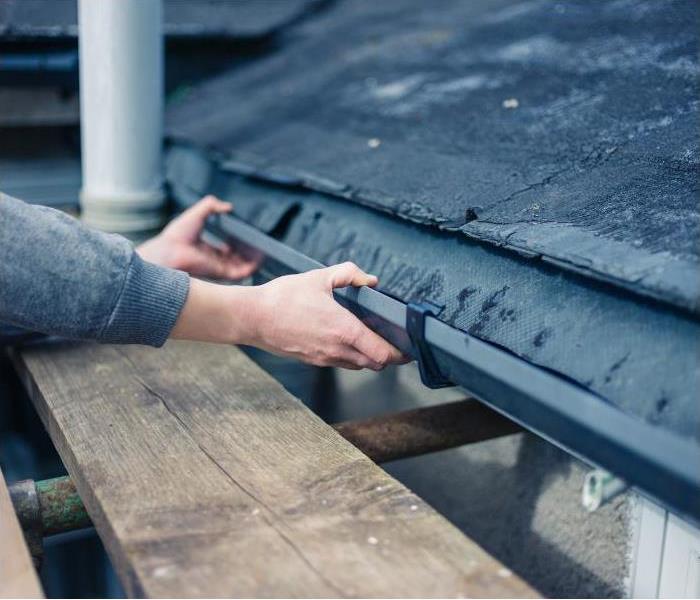 Winter Home Maintenance in West Valley City, UT.
Winter Home Maintenance in West Valley City, UT.
As we settle into the heart of the winter season in West Valley City, Utah, the cold temperatures, snow, and occasional rain create unique challenges for homeowners. The chilly weather brings not only cozy moments indoors but also potential risks to your home, including water damage, frozen pipes, and fire hazards. Fortunately, taking a few simple preventative steps can help ensure that your home stays safe, dry, and efficient during these colder months.
At SERVPRO® of West Valley City, we're here to help you maintain your home’s well-being throughout winter. Whether it's preventing frozen pipes or ensuring your heating system is functioning properly, these tips will keep your home safe and minimize the risk of damage.
1. Protect Your Pipes from Freezing
Winter temperatures in West Valley City can drop below freezing, creating the risk of water pipes freezing and bursting. This common issue can lead to extensive water damage that requires costly repairs and can disrupt your household.
To protect your pipes, consider the following tips:
- Insulate Exposed Pipes: Make sure that any exposed pipes, especially in basements, attics, or garages, are insulated. Pipe insulation sleeves or heating tape are inexpensive options that can prevent freezing.
- Keep Cabinets Open: If you have pipes under sinks, particularly those on exterior walls, leave the cabinet doors open to allow warm air to circulate around the pipes.
- Allow Faucets to Drip: During extremely cold temperatures, letting a faucet drip slightly can prevent pressure from building up and causing pipes to burst.
- Shut Off Outdoor Faucets: Disconnect and drain any hoses, and shut off water to exterior faucets. A freeze in these pipes can affect your water system inside the home.
2. Regularly Inspect Your Roof and Gutters
Winter weather can bring heavy snow and ice, leading to potential roof damage and gutter blockages. Keeping your roof in good condition is crucial for preventing water damage due to ice dams and melting snow.
Here’s how to prevent issues:
- Clear Gutters and Downspouts: Make sure gutters are free from leaves and debris, allowing snowmelt to flow off the roof. Clogged gutters can lead to water pooling on the roof, creating the risk of leaks.
- Inspect Roof Shingles: Look for missing or damaged shingles that might allow water to seep into your home. Snow accumulation can worsen existing damage, so it’s important to address it early.
- Remove Snow Buildup: If snow accumulates on your roof, carefully remove it with a roof rake. Avoid using metal tools, which can damage shingles. Ice dams can form when water is trapped by snow, leading to leaks inside your home.
3. Maintain Your Heating System
Your heating system works overtime during the winter, and it’s essential to ensure it’s operating safely and efficiently. A well-maintained system not only keeps your home comfortable but also prevents fire hazards.
Follow these tips:
- Replace Filters: Dirty filters can restrict airflow and reduce the efficiency of your heating system. Replace them regularly for optimal performance.
- Schedule a Professional Inspection: Have a professional technician inspect and service your furnace before the cold weather sets in. This can catch any issues early and improve the system’s efficiency.
- Check for Carbon Monoxide Leaks: If you have a gas-powered heating system, make sure your carbon monoxide detectors are working. Carbon monoxide poisoning is a serious risk, especially during the winter months when your windows are closed, and your heating system is running more frequently.
4. Prevent Fire Hazards
The winter season often means more time spent indoors, with heating systems, fireplaces, and candles in use. While these elements keep us warm and cozy, they also increase the risk of fire damage if not managed properly.
Here’s how to reduce your risk:
- Clean Your Fireplace: If you use a wood-burning fireplace, ensure the chimney is cleaned and free of debris. A clogged chimney can cause dangerous buildup and even a fire.
- Use Space Heaters Safely: If using space heaters, keep them at least three feet away from anything flammable, such as curtains, blankets, or furniture. Always turn off space heaters when leaving a room or going to bed.
- Check Smoke Detectors: Test your smoke detectors monthly, and replace the batteries at least once a year. Having a working smoke alarm can be a lifesaver in the event of a fire.
5. Prepare for Winter Storms
Winter storms can happen unexpectedly, leaving you stranded at home or causing power outages. It’s important to be prepared for emergencies and have an emergency kit stocked with essential items.
Here are some preparedness tips:
- Keep a Winter Emergency Kit: This kit should include blankets, flashlights, batteries, non-perishable food, bottled water, a first aid kit, medications, and any other items you might need in an emergency.
- Check Your Roof and Windows for Seals: Before a storm hits, check that your windows and doors are sealed properly. Cold drafts can lead to heat loss, making your home less efficient and raising your heating bills.
- Have a Plan for Power Outages: Keep extra blankets and warm clothing on hand. If you have a generator, ensure it’s working properly and that you know how to use it safely.
6. Watch for Ice and Snow Accumulation on Driveways and Walkways
Ice and snow can quickly accumulate on your driveway, walkways, and steps, creating hazardous conditions. Slip-and-fall accidents are a common winter injury, but they can be prevented with some simple steps.
Here’s how to stay safe:
- Shovel Regularly: Keep a shovel or snow blower handy and clear your driveway and walkways often. Don’t wait for snow to pile up, as it can become heavy and difficult to remove later.
- Use Ice Melt: Spread ice melt or sand on walkways and driveways to prevent dangerous ice buildup. Be cautious with salt, as it can damage your lawn and plants.
- Wear Proper Footwear: When walking outside, wear shoes with good traction to reduce your risk of slipping on icy surfaces.
7. Check for Water Leaks and Address Moisture Issues
Winter weather brings more than just snow and freezing temperatures – it can also cause excess moisture inside your home. Leaky roofs, condensation, and burst pipes can lead to serious water damage. Check for signs of moisture and leaks early to prevent more extensive issues.
Look out for:
- Water Stains on Ceilings or Walls: Any signs of water stains, drips, or leaks should be addressed immediately. These may indicate that melting snow or ice is seeping into your home.
- Check Insulation and Vapor Barriers: Ensure your attic and crawl spaces are properly insulated to prevent condensation and moisture buildup.
- Respond Quickly to Water Damage: If you do experience water damage, it’s essential to act quickly to minimize further issues. SERVPRO of West Valley City offers expert water damage restoration services to help you return your home to its preloss condition.
Winter brings beauty to West Valley City, but it also poses challenges for homeowners. By following these maintenance tips and staying proactive, you can ensure your home is well-protected throughout the winter season. Whether it's preventing water damage, reducing fire hazards, or preparing for storms, SERVPRO of West Valley City is here to help you manage any winter mishaps that might arise.
Remember, if you experience water damage, frozen pipes, or any other winter-related issues, don't hesitate to contact our team for fast, reliable restoration services. We're always ready to help make it "Like it never even happened."
Stay safe and warm this winter season!
New Year, New Home: Start the Year Off Right with Preventative Maintenance
12/17/2024 (Permalink)
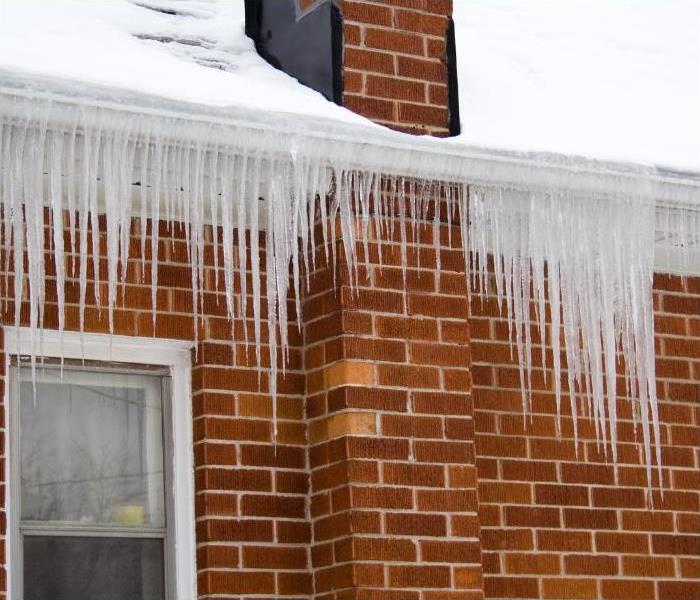 Preventative Maintenance in West Valle City, UT.
Preventative Maintenance in West Valle City, UT.
As we welcome the New Year, it’s the perfect time to set resolutions for a fresh start – and that includes ensuring your home is safe and secure. One of the most proactive steps you can take is to start the year off with preventative maintenance. By addressing potential risks, you can avoid the stress and cost of dealing with unexpected water, fire, and mold damage down the road. At SERVPRO® of West Valley City, we understand the importance of prevention and want to help you protect your home from the harsh elements and unforeseen circumstances that can cause significant damage.
Here’s how you can safeguard your home in 2024 and beyond:
1. Inspect and Maintain Your Roof
The roof is one of the most crucial parts of your home’s defense against the elements. Throughout the winter months, snow and ice can accumulate on your roof, leading to ice dams and water leaks. The best way to prevent water damage is to ensure your roof is in top condition.
What to do:
- Inspect for damage: After winter storms, take the time to check your roof for loose shingles, damage, or debris buildup.
- Clear gutters: Clogged gutters can cause water to back up, leading to leaks in your roof or walls. Clean gutters regularly to allow water to flow freely.
- Check for ice dams: Ice dams occur when snow melts from your roof, runs down, and refreezes at the eaves. These ice formations can cause water to seep into your home. Make sure your attic is well-insulated to prevent this from happening.
If you discover damage or suspect issues, it’s always best to call a professional roofer to make necessary repairs. A small roof problem can quickly turn into a large-scale water damage issue if left unchecked.
2. Inspect and Maintain Your Plumbing
Frozen pipes are a common issue during the cold winter months, especially in areas with freezing temperatures. If not properly protected, pipes can burst, causing water to flood your home and leading to severe water damage.
What to do:
- Insulate pipes: Make sure any exposed pipes in unheated areas, such as the basement, attic, or garage, are properly insulated.
- Check for leaks: Look for visible signs of leaks around pipes, faucets, and appliances. Even a small leak can lead to significant damage over time.
- Allow faucets to drip: During extreme cold, allow faucets to drip slightly to prevent pipes from freezing. This keeps water moving and reduces the risk of freezing.
By catching plumbing issues early, you can avoid a pipe burst or flooding disaster. If you do experience water damage from burst pipes, SERVPRO of West Valley City is ready to respond quickly to mitigate the damage.
3. Service Your Heating System
Your heating system works overtime during the winter months, and a malfunctioning system can lead to more than just discomfort—it can also contribute to fire risks. Preventative maintenance on your heating system ensures it runs efficiently and safely.
What to do:
- Change filters: Replace air filters every 1-3 months to keep the system running smoothly and prevent dust buildup.
- Clean ducts: Over time, dust and debris can build up in your air ducts. This buildup not only reduces efficiency but can also be a fire hazard.
- Schedule a professional inspection: A licensed HVAC technician can inspect and service your heating system to ensure it’s in good working order, reducing the risk of malfunction or fire.
Routine maintenance is essential to avoiding both fire hazards and the discomfort of a heating system failure.
4. Clean Your Chimney and Fireplace
During the winter, many homeowners rely on fireplaces and wood stoves for warmth. However, without regular cleaning and maintenance, these cozy features can pose a significant fire risk.
What to do:
- Inspect your chimney: Have your chimney inspected annually to check for blockages, cracks, or creosote buildup. Creosote is a highly flammable substance that can ignite if not removed.
- Clean your fireplace: Keep the area around your fireplace clear of debris. Make sure that no flammable materials are nearby, and ensure the fireplace is properly maintained.
By scheduling regular chimney inspections and cleanings, you can enjoy a warm fire without worrying about the potential for a dangerous chimney fire.
5. Prevent Mold Growth
Mold can quickly become a problem in areas that experience high humidity or excess moisture, especially after storms, floods, or leaks. Even in winter, mold can be a serious concern if moisture is trapped inside your home.
What to do:
- Control humidity: Use dehumidifiers in damp areas such as basements and bathrooms to prevent mold growth. Keep humidity levels below 60% to avoid moisture buildup.
- Inspect for leaks: After storms, inspect your home for leaks or water damage. Pay attention to areas such as ceilings, windows, and pipes. A small leak left unchecked can lead to a mold problem.
- Clean and dry wet areas: If you notice moisture or standing water after a storm or appliance failure, act quickly to dry the area. The longer water sits, the higher the chances of mold growth.
If you find mold in your home, it’s important to address the problem as quickly as possible. Mold can spread rapidly and can cause both structural damage and health issues.
6. Check Your Home’s Insulation
Proper insulation is crucial to maintaining a comfortable and safe home during the winter. Without adequate insulation, your home may experience temperature fluctuations that can lead to condensation, frozen pipes, and energy inefficiency.
What to do:
- Check for drafts: Walk around your home and check for drafts. Common areas for drafts include windows, doors, and attic hatches.
- Insulate pipes: Ensure that any exposed pipes are properly insulated to prevent freezing and bursting.
- Upgrade insulation: If your home’s insulation is old or inadequate, consider upgrading to improve energy efficiency and prevent temperature-related damage.
Good insulation not only helps protect your home but also reduces energy costs during the colder months.
7. Have an Emergency Plan in Place
While you can take many preventative measures, accidents can still happen. The key is to be prepared. Having an emergency plan in place for water, fire, or mold damage can help minimize the impact if something goes wrong.
What to do:
- Know who to call: Keep the contact information for SERVPRO of West Valley City handy in case of an emergency. Our team is available 24/7 for any restoration needs.
- Create an emergency kit: Ensure your home is stocked with essential supplies like flashlights, batteries, first aid kits, and non-perishable food in case of an emergency.
By planning ahead, you’ll feel more confident that you can respond quickly and effectively to any situation that arises.
Starting the year with preventative maintenance helps ensure your home is protected from the elements, potential hazards, and unexpected disasters. By addressing common risks such as water, fire, and mold, you can avoid costly damage and the stress of dealing with repairs.
If you experience any damage to your home, SERVPRO of West Valley City is here to help. Our team is ready to respond quickly and restore your home "like it never even happened." Contact us today for professional inspections, repairs, and restoration services.
Christmas Season Safety Tips for West Valley City, UT: Protect Your Home and Loved Ones
11/22/2024 (Permalink)
 Protect Your Home and Loved Ones in West Valley City, UT
Protect Your Home and Loved Ones in West Valley City, UT
The holiday season brings joy and togetherness, but it also brings an increased risk of accidents and damage in your home. From Christmas lights to festive meals, the holidays can be a time of increased fire hazards, water damage, and other emergencies that could affect your property. At SERVPRO of West Valley City, we care about the safety of your home and family. In this blog, we will share essential Christmas season safety tips to ensure your holidays are safe and stress-free.
1. Inspect Holiday Lights and Decorations
Christmas lights are one of the most popular ways to decorate your home, but they can also pose a fire hazard if not used properly. According to the National Fire Protection Association (NFPA), electrical issues are a leading cause of home fires during the holiday season. Here’s how you can minimize the risks:
Check for Frayed Wires: Before using your Christmas lights, inspect the cords for any signs of wear, fraying, or damage. Damaged wires can spark and lead to fires.
Use Certified Lights: Ensure that all your lights are UL (Underwriters Laboratories) listed for safety. This ensures that the lights meet safety standards and are suitable for indoor or outdoor use.
Don’t Overload Circuits: Plugging too many lights into a single outlet or extension cord can increase the risk of an electrical fire. Use a power strip with a surge protector if you need to plug multiple items in.
Turn Off Lights When You Sleep: Never leave holiday lights on when you're not around or when you go to bed. Unplugging them at night will reduce the risk of overheating and fire.
Outdoor Lighting Safety: If you’re decorating outside, ensure your lights are rated for outdoor use. Avoid running lights through wet areas, such as puddles, and check for any exposed wires.
2. Keep Candles Away from Flammable Materials
Candles are a staple of holiday décor, from Advent candles to the glow of a Christmas Eve dinner table. However, unattended candles are one of the leading causes of home fires during the holidays. To ensure candle safety:
Never Leave Candles Unattended: Always blow out candles when you leave a room or go to sleep. Never leave them near your Christmas tree, curtains, or other flammable materials.
Use a Safe Holder: Place candles in sturdy, heat-resistant holders that won’t tip over easily. Keep candles on a flat, stable surface away from any drafts.
Keep Candles Out of Reach of Children and Pets: Kids and pets are naturally curious and can accidentally knock over candles, leading to a fire.
3. Fireplace Safety: Prevent Chimney Fires
A cozy fire in the fireplace is a perfect way to relax during the Christmas season, but it’s important to use fire safety practices to prevent accidents.
Have Your Chimney Inspected: Before using your fireplace, have a professional chimney inspection to ensure it’s clear of debris or creosote buildup, which can catch fire.
Use a Fireplace Screen: A fireplace screen helps prevent embers from escaping the fireplace, which could ignite nearby rugs or furniture.
Never Leave a Fire Unattended: Always ensure a fire is completely out before leaving the house or going to sleep. If you use firewood, make sure it’s completely extinguished.
4. Christmas Tree Fire Safety
Christmas trees bring warmth and joy to the home, but they can also be a fire hazard, especially if not properly maintained. Here’s how you can keep your tree safe:
Choose a Fresh Tree: If you're opting for a real tree, make sure it’s fresh. A dry tree is highly flammable and poses a significant risk. Fresh trees should have green needles that do not fall off easily and a strong trunk.
Water Your Tree Regularly: Keep your tree hydrated by watering it every day. A well-watered tree is less likely to catch fire than a dry one.
Place Your Tree Away from Heat Sources: Keep your Christmas tree away from heat vents, radiators, and other heat-producing appliances. Never place it near a fireplace or candles.
Dispose of Your Tree Promptly: When the holiday season is over, dispose of your tree as soon as possible. A dried-out tree is a major fire hazard and should not be kept indoors for too long.
5. Fireplace and Space Heater Safety
Space heaters can help keep you warm on those chilly winter nights, but they can be a fire hazard if not used correctly.
Keep Heaters Away from Flammable Materials: Never place a space heater near curtains, bedding, or any other flammable objects. Ensure that you follow the manufacturer's guidelines for safe placement.
Turn Off When Unattended: Always turn off your space heater when leaving a room or going to bed. Never leave it running while you sleep.
Install Smoke Detectors: Ensure that your home has working smoke detectors. Test them monthly, and replace the batteries if needed.
6. Water Damage Prevention
Winter storms are common in West Valley City, UT, during the Christmas season. Snow and rain can lead to flooding or water damage if you’re not prepared. Here’s how you can protect your home from water damage:
Check Your Roof: Inspect your roof for any loose or damaged shingles that could allow water to enter your home. Snow and ice can accumulate on your roof, and a blocked gutter can cause water to back up and leak into your home.
Maintain Gutters and Downspouts: Clear your gutters of leaves and debris to ensure proper water drainage. Clogged gutters can cause water to overflow and seep into your walls or foundation.
Install a Sump Pump: A sump pump can help protect your basement or lower levels from water damage, especially during heavy rain or melting snow.
Monitor Water Pipes: Freezing temperatures can cause water pipes to burst. Insulate your pipes, particularly those in unheated areas like basements and attics, to prevent them from freezing and cracking.
7. Be Prepared for Winter Storms
West Valley City experiences harsh winter weather, so it's essential to be prepared for winter storms during the Christmas season. Here’s what you can do to stay safe:
Create an Emergency Kit: Keep an emergency kit with essentials like blankets, non-perishable food, bottled water, flashlights, batteries, and a first aid kit.
Know How to Shut Off Utilities: Be familiar with how to shut off your water, gas, and electricity in case of an emergency.
Keep Walkways Clear: Prevent slips and falls by salting your driveway and walkways regularly. Keep sidewalks clear of snow and ice to ensure safe entry to your home.
8. Safe Cooking Practices
The holiday season is filled with family meals, but cooking can lead to accidents if safety precautions aren’t followed. Follow these tips to stay safe in the kitchen:
Stay in the Kitchen: Never leave cooking food unattended, especially if you’re frying or cooking with oil. Grease fires can spread quickly.
Keep a Fire Extinguisher Handy: Always have a fire extinguisher near your kitchen. Make sure you know how to use it.
Avoid Overloading the Stove: Avoid overcrowding your stove, especially when deep frying a turkey or preparing a large meal. This reduces the risk of grease spills and fires.
9. Maintain a Fire Escape Plan
In case of a fire emergency, having a fire escape plan can make all the difference in keeping your family safe. Practice your escape routes with your family, making sure everyone knows two ways to get out of each room.
The Christmas season is a time for celebration, but it’s important to keep safety at the forefront to protect your home and loved ones. By following these tips, you can minimize risks and enjoy a safe holiday season in West Valley City, UT. At SERVPRO® of West Valley City, we're always ready to help with any unexpected damage. If disaster strikes, you can count on us to restore your home “Like it never even happened.”
Fall Home Maintenance in West Valley City, UT: Preparing for Winter
10/21/2024 (Permalink)
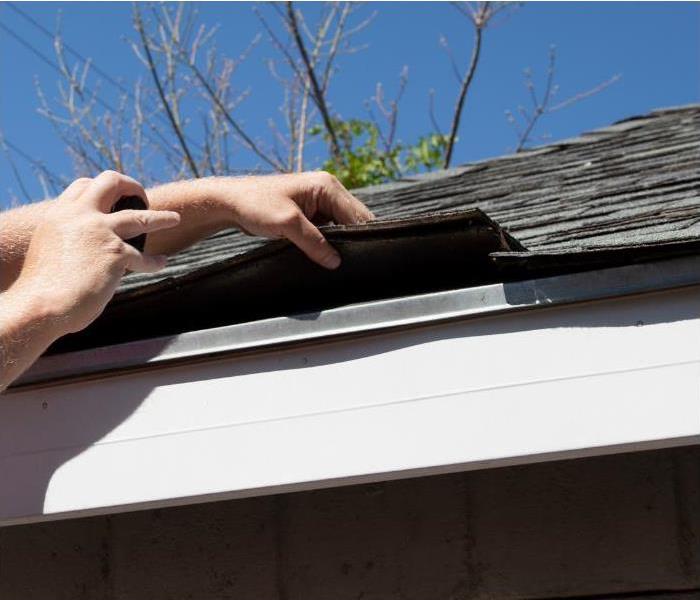 Fall Home Maintenance in West Valley City, UT
Fall Home Maintenance in West Valley City, UT
As the crisp air of autumn settles in West Valley City, UT, homeowners are reminded that winter is just around the corner. With beautiful foliage transforming the landscape, it’s essential to use this time wisely by preparing your home for the colder months ahead. Proper fall maintenance can prevent costly repairs, increase energy efficiency, and ensure your home remains safe and comfortable throughout winter. Here’s a comprehensive guide to essential fall home maintenance tasks and how SERVPRO® can assist you in this process.
1. Inspect and Clean Your Gutters
One of the most critical fall maintenance tasks is cleaning your gutters. During fall, leaves and debris accumulate quickly, leading to clogged gutters. Clogged gutters can cause water to back up, potentially damaging your roof, siding, and foundation. Additionally, ice dams can form when water freezes in the gutters, creating hazards for your home.
Action Steps:
Remove Debris: Safely use a ladder to remove leaves and debris from your gutters and downspouts.
Check for Damage: Inspect your gutters for signs of damage, such as rust, cracks, or sagging. Repair or replace any damaged sections as needed.
Ensure Proper Drainage: Make sure downspouts direct water away from your home’s foundation.
If you’re uncomfortable doing this yourself, SERVPRO offers gutter cleaning services to ensure your gutters are functioning correctly and to prevent any future issues.
2. Assess Your Roof
Your roof protects your home from the harsh winter elements, making it crucial to assess its condition before the snowfall begins. Damaged shingles, cracks, and missing tiles can lead to leaks, mold growth, and structural damage.
Action Steps:
Inspect for Damage: Look for missing, cracked, or curling shingles. Pay special attention to flashing around chimneys and vents.
Check the Attic: Inspect the attic for signs of leaks, water stains, or mold. These can indicate a roof problem that needs immediate attention.
Professional Assessment: Consider hiring a roofing professional to conduct a thorough inspection and perform any necessary repairs.
If you discover leaks or water damage, SERVPRO can help with restoration services to ensure your home remains dry and safe.
3. Seal Windows and Doors
Drafty windows and doors can significantly increase your heating bills during the winter months. Properly sealing your home helps maintain a comfortable indoor temperature and reduces energy costs.
Action Steps:
Inspect Seals: Check the caulking and weather stripping around your windows and doors for cracks or gaps.
Reapply Caulk: Remove old caulk and apply a new bead around windows and doors, ensuring a tight seal.
Install Weather Stripping: If necessary, add weather stripping to the edges of doors for improved insulation.
Taking these steps can make a significant difference in your home’s energy efficiency during the colder months.
4. Prepare Your Heating System
Before the first snowflakes fall, ensure your heating system is in optimal condition. A well-maintained heating system is crucial for staying warm and comfortable during winter.
Action Steps:
Schedule Maintenance: Hire a professional to inspect and clean your furnace or heating system. This maintenance can prevent unexpected breakdowns when you need heat the most.
Change Filters: Regularly change the air filters in your heating system to improve efficiency and air quality.
Consider Air Duct Cleaning: Over time, dust and allergens can accumulate in your air ducts. SERVPRO provides air duct cleaning services to ensure the air circulating through your home is clean and healthy.
5. Inspect Your Plumbing
Freezing temperatures can pose a serious threat to your plumbing system. Pipes can freeze and burst, leading to significant water damage and costly repairs.
Action Steps:
Insulate Pipes: Insulate pipes in unheated areas, such as the basement and garage, to prevent freezing. Use pipe insulation sleeves or wrap them in insulation tape.
Drain and Store Hoses: Disconnect and drain garden hoses before storing them for winter. This prevents damage to outdoor faucets and hoses.
Check for Leaks: Inspect your plumbing for any leaks or signs of wear, and address any issues immediately.
If you encounter plumbing issues or need assistance with winterizing, SERVPRO’s team is equipped to help with repairs and restoration.
6. Maintain Your Lawn and Landscaping
As fall arrives, it’s essential to prepare your lawn and landscaping for the winter months. Proper maintenance can help ensure your yard is healthy come spring.
Action Steps:
Rake Leaves: Regularly rake leaves to prevent them from smothering your grass. A thick layer of leaves can lead to mold and disease.
Trim Shrubs and Trees: Prune overgrown trees and shrubs to prevent damage during winter storms. This helps promote healthy growth and improves the appearance of your landscape.
Aerate and Seed: Aerate your lawn and overseed it to promote healthy root growth and prepare for the spring.
7. Stock Emergency Supplies
While no one wants to think about winter emergencies, it’s wise to be prepared for unexpected situations. Winter storms can lead to power outages, making it essential to have an emergency kit.
Action Steps:
Create an Emergency Kit: Ensure your home has an emergency kit stocked with essentials such as flashlights, batteries, water, non-perishable food, and a first aid kit.
Keep Snow Removal Tools Handy: Have a snow shovel, ice melt, and other winter tools readily available to maintain safe walkways around your home.
8. Check Smoke and Carbon Monoxide Detectors
As you prepare for winter, don’t forget to check your smoke and carbon monoxide detectors. These devices are crucial for keeping your home safe from fire and gas leaks.
Action Steps:
Test Detectors: Press the test button on each detector to ensure they are working properly.
Replace Batteries: If your detectors are battery-operated, replace the batteries to ensure they function correctly throughout the winter.
Partner with SERVPRO
At SERVPRO, we understand that fall home maintenance can be overwhelming, especially for busy homeowners. Our team of trained professionals is here to help you prepare your home for winter. From gutter cleaning and air duct services to plumbing repairs and emergency restoration, SERVPRO is your trusted partner in maintaining a safe and comfortable home.
As you embrace the beauty of fall in West Valley City, take the time to address these crucial maintenance tasks. Preparing your home for winter will ensure peace of mind and allow you to enjoy the season to its fullest. Reach out to SERVPRO today to learn how we can assist you in keeping your home in top shape all year round.
By taking proactive steps to maintain your home this fall, you can enjoy a warm and safe winter, knowing that you’ve done everything possible to protect your most significant investment—your home.
Acting Quickly After Water Damage to Prevent Mold: Essential Tips for West Valley City, UT
9/25/2024 (Permalink)
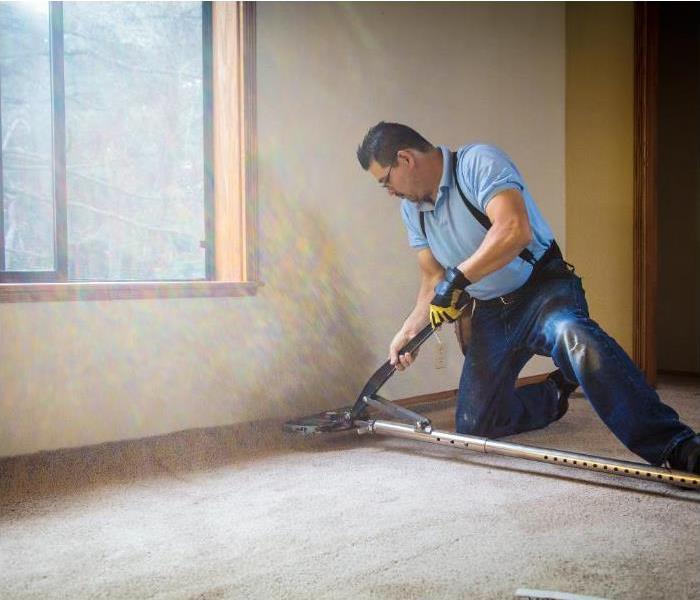 Prevent Mold in West Valley UT.
Prevent Mold in West Valley UT.
Water damage can be a homeowner's worst nightmare. Whether it's due to a burst pipe, heavy rainfall, or an overflowing appliance, the aftermath of water damage can be extensive and costly. One of the most concerning secondary issues that can arise from water damage is mold growth. Mold thrives in damp environments, making homes that have suffered water damage particularly vulnerable. In West Valley City, UT, where weather conditions can sometimes be unpredictable, it's crucial to understand how acting quickly can prevent further damage and avoid the need for extensive mold damage restoration.
Understanding the Risks of Mold After Water Damage
Mold spores are present in the air all around us, but they only begin to grow when they find a suitable environment. After water damage, your home becomes a perfect breeding ground for mold due to the increased moisture levels. Mold can start growing within 24 to 48 hours of water exposure. Once it starts, it can spread rapidly, leading to significant structural damage.
The Importance of Immediate Action
The key to preventing mold growth after water damage is to act quickly. Here's a step-by-step guide on what to do immediately after experiencing water damage:
1. Ensure Safety First
Before doing anything, ensure that it's safe to enter the affected area. Turn off the electricity to prevent the risk of electrical shock and avoid using electrical appliances or devices in the vicinity of water damage. If the water damage is extensive, consider evacuating the area until professionals can assess the situation.
2. Stop the Source of Water
Identify and stop the source of the water as soon as possible. If it's a burst pipe, turn off the main water supply to your home. For roof leaks, consider using a temporary tarp to cover the damaged area until repairs can be made. Stopping the source of water is crucial to prevent further damage and reduce the potential for mold growth.
3. Remove Standing Water
The next step is to remove any standing water. Use a wet/dry vacuum, mop, or towels to soak up as much water as possible. The quicker you can remove the water, the lower the risk of mold development. If the water is extensive, you may need to contact a professional water damage restoration service to handle the cleanup effectively.
4. Dry Out the Affected Area
Once the standing water has been removed, it's essential to dry out the affected area thoroughly. Use fans, dehumidifiers, and open windows to increase airflow and reduce moisture levels. The goal is to get everything as dry as possible within 24 to 48 hours. This step is critical because even small amounts of moisture can contribute to mold growth.
5. Inspect and Remove Damaged Materials
Inspect the area for any materials that have been damaged beyond repair. This may include drywall, insulation, and carpeting. These materials can retain moisture and become moldy if not removed promptly. Dispose of any materials that are too damaged to salvage, and ensure that any remaining items are thoroughly dried before reinstallation.
6. Clean and Disinfect
After the area is dry, clean and disinfect all surfaces that were affected by water. Use a mixture of water and detergent to scrub surfaces, followed by a disinfectant to kill any remaining bacteria and prevent mold growth. Pay special attention to areas that are prone to mold, such as corners, under cabinets, and around windows.
7. Monitor for Mold Growth
Even after taking these steps, it's important to keep an eye on the affected area for any signs of mold growth. Look for discoloration, a musty smell, or any visible mold patches. If you notice any of these signs, it’s crucial to address them immediately to prevent further spread.
When to Call a Professional
While many homeowners can handle minor water damage issues on their own, more extensive damage or persistent moisture problems may require professional assistance. Mold damage restoration experts in West Valley City, UT, can provide specialized equipment and expertise to handle severe water damage and mold infestations. They can perform a thorough inspection, use advanced drying techniques, and ensure that all mold is effectively removed and prevented.
Preventing Future Water Damage
Once you've addressed the immediate damage, it's essential to take steps to prevent future water damage. Regular maintenance of your home's plumbing system, roof, and gutters can help reduce the risk of water damage. Additionally, installing a sump pump or dehumidifier can provide added protection against water-related issues.
In West Valley City, UT, where weather patterns can sometimes lead to unexpected water damage, staying proactive about home maintenance and water damage prevention can save you from costly repairs and health issues down the line. By acting quickly and following these steps, you can mitigate the risks of mold damage and ensure that your home remains safe and dry.
Water damage can be overwhelming, but prompt action can make all the difference in preventing further issues like mold growth. By stopping the source of water, removing standing water, drying out the area, and inspecting for damage, you can significantly reduce the risk of mold and protect your home from further harm. In West Valley City, UT, where local conditions may contribute to water-related problems, being vigilant and prepared is key to maintaining a safe and healthy living environment. If you're facing severe water damage, don't hesitate to contact a professional mold damage restoration service to ensure that your home is properly restored and protected.
4 Steps of Action To Take After Storm Damage in West Valley City, UT
9/2/2024 (Permalink)
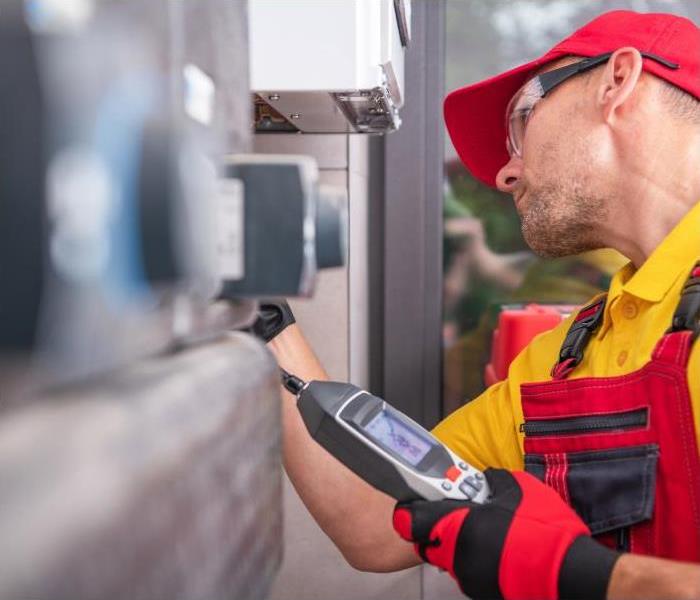 Storm Damage in West Valley City, UT
Storm Damage in West Valley City, UT
Storms can be both unpredictable and devastating. When a severe storm strikes West Valley City, UT, the aftermath can leave homes and properties in disarray. Acting promptly and effectively is crucial to mitigate further damage and begin the restoration process. Here are four essential steps to take after experiencing storm damage in West Valley City to ensure a thorough and efficient recovery.
1. Ensure Safety and Assess the Situation
Prioritize Safety
The first and most important step is ensuring the safety of everyone on the property. After a storm, there may be hazards such as fallen power lines, unstable structures, or gas leaks. Before entering your home or any damaged areas, take these precautions:
Check for Gas Leaks: If you smell gas or suspect a leak, evacuate immediately and contact your utility provider.
Avoid Electrical Hazards: Stay away from any exposed electrical wires and avoid touching anything electrical if you're wet or standing in water.
Assess Structural Integrity: Look for signs of severe structural damage, such as large cracks in walls or sagging roofs. If there is significant damage, it is best to have a professional assess the safety of the building before re-entering.
Document the Damage
Once it is safe to do so, begin documenting the extent of the damage for insurance purposes. Take clear photographs or videos of all affected areas and items. This documentation will be crucial when filing an insurance claim and will help restoration professionals understand the full scope of the damage.
2. Contact Your Insurance Provider
Report the Damage
Reach out to your insurance provider as soon as possible to report the storm damage. Provide them with detailed information about the extent of the damage and share the documentation you collected. Your insurance company will guide you through the claims process and advise you on any immediate steps you need to take.
Understand Your Coverage
Review your insurance policy to understand what is covered under storm damage and any deductibles or limits that may apply. This will help you set realistic expectations for the claims process and determine what costs you might need to cover out of pocket.
Schedule an Inspection
Arrange for an insurance adjuster to inspect the damage. They will assess the situation, verify the extent of the damage, and determine the amount of coverage you are eligible for. Having a clear and accurate report from the adjuster will facilitate the repair and restoration process.
3. Begin the Cleanup Process
Remove Standing Water
If your home has experienced flooding or water damage, it is crucial to remove standing water as quickly as possible to prevent mold growth and further structural damage. Use a wet/dry vacuum or a sump pump to extract water from the affected areas. If the water is extensive or involves contaminated sources, it is advisable to hire a professional water damage restoration service.
Dry Out the Affected Areas
After removing standing water, thoroughly dry out the affected areas. Use fans, dehumidifiers, and open windows to promote airflow and reduce moisture. This step is essential to prevent mold growth and further deterioration of building materials. If you notice any signs of mold growth, such as a musty odor or visible mold, contact a professional mold remediation service.
Remove Damaged Materials
Carefully remove any damaged materials that cannot be salvaged, such as soaked insulation, drywall, or flooring. Be cautious when handling these materials, as they may be contaminated with bacteria or other harmful substances. Proper disposal of these materials is important to ensure a safe and clean environment for restoration.
4. Begin Repairs and Restoration
Hire a Professional Restoration Service
Once the initial cleanup is complete, it is time to begin repairs and restoration. Hiring a professional restoration service, like SERVPRO®, can ensure that the repairs are done correctly and efficiently. Restoration experts will have the necessary equipment and expertise to handle complex repairs and restore your property to its pre-damage condition.
Prioritize Repairs
Start with critical repairs that address structural issues or prevent further damage. This may include repairing roofs, windows, or doors that were damaged during the storm. Addressing these issues promptly will help protect your home from additional weather-related damage and ensure the safety and integrity of the structure.
Work with Your Insurance Company
Coordinate with your insurance company and restoration service to ensure that all necessary repairs are covered by your policy. Keep detailed records of all repair work, including invoices and receipts, to provide to your insurance provider for reimbursement.
Recovering from storm damage in West Valley City, UT, requires prompt action and careful planning. By following these four steps—ensuring safety, contacting your insurance provider, beginning the cleanup process, and starting repairs—you can effectively manage the aftermath of a storm and restore your home to its original condition. Remember, the expertise of professional restoration services, such as SERVPRO®, can make a significant difference in the speed and quality of the restoration process. If you need assistance with storm damage restoration, don’t hesitate to reach out to our team for support and guidance.
A Guide to Fire Damage Restoration in West Valley City, UT
7/19/2024 (Permalink)
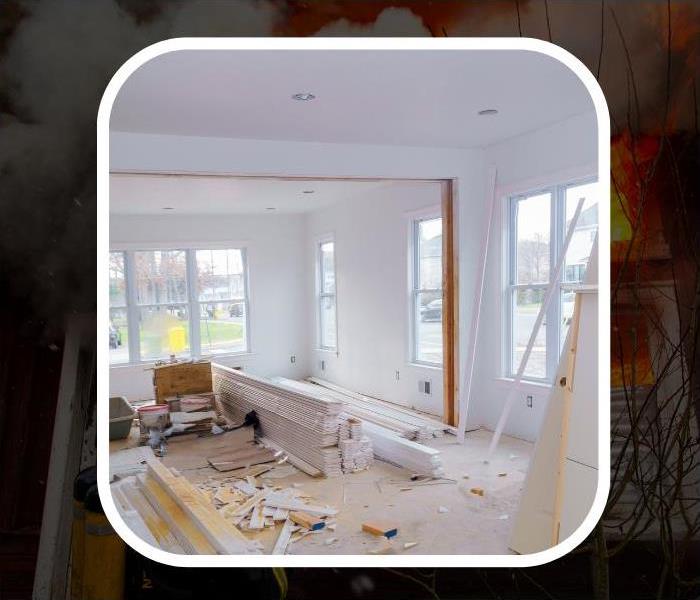 Fire Damage Restoration Services in West Valley City, UT
Fire Damage Restoration Services in West Valley City, UT
Experiencing a fire in your home or business is a traumatic event that can leave you feeling overwhelmed and uncertain about the next steps. Fire damage goes beyond the visible destruction, impacting the structure, air quality, and emotional well-being of those affected. In West Valley City, UT, a systematic approach to fire damage restoration can help you reclaim your property and peace of mind. Here's a comprehensive guide on the steps involved in fire damage restoration to ensure your property is restored to its pre-fire condition.
1. Emergency Contact and Initial Assessment
The first and most crucial step in fire damage restoration is to contact a professional restoration company immediately. Companies like SERVPRO in West Valley City, UT, provide 24/7 emergency services to quickly respond to fire incidents. When you make that call, be prepared to provide details about the extent of the damage, the cause of the fire, and any immediate safety concerns.
Upon arrival, the restoration team will conduct a thorough initial assessment to evaluate the extent of the fire, smoke, and soot damage. This assessment will guide the development of a customized restoration plan tailored to your property's specific needs.
2. Securing the Property
After the initial assessment, the next step is to secure the property to prevent further damage and unauthorized access. This may involve boarding up windows, doors, and other openings, as well as placing tarps on damaged roofs. Securing the property is essential to protect it from the elements and potential vandalism.
3. Water Removal and Drying
In many cases, fire damage is accompanied by water damage due to firefighting efforts. Removing standing water and thoroughly drying the affected areas is critical to prevent mold growth and further structural damage. High-powered pumps and industrial-grade dehumidifiers are used to extract water and moisture from walls, floors, and other surfaces.
4. Smoke and Soot Removal
Smoke and soot can cause significant damage to both the structure and contents of your property. Specialized cleaning techniques and equipment are used to remove soot from walls, ceilings, and other surfaces. This process involves:
Dry Cleaning: Using special brushes and vacuum systems to remove loose soot and debris.
Wet Cleaning: Applying cleaning solutions and scrubbing to remove stubborn soot and residues.
Smoke Odor Removal: Utilizing thermal foggers, ozone generators, and hydroxyl generators to eliminate smoke odors from the property.
5. Structural Cleaning and Decontamination
After the initial cleaning, the focus shifts to deep cleaning and decontaminating the structure. This step involves:
Cleaning HVAC Systems: Ensuring that soot and smoke particles are removed from the heating, ventilation, and air conditioning systems to prevent the circulation of contaminants.
Cleaning and Sanitizing Surfaces: Using specialized cleaning agents to sanitize and deodorize walls, floors, and ceilings.
Contents Cleaning: Cleaning and restoring personal belongings, furniture, and other items affected by smoke and soot.
6. Repairing and Restoring Damaged Areas
Once the property is clean and decontaminated, the next step is to repair and restore damaged areas. This may involve:
Replacing Drywall and Insulation: Removing and replacing damaged drywall and insulation to ensure structural integrity and insulation efficiency.
Repairing or Replacing Flooring: Addressing damaged flooring, whether it's carpet, hardwood, tile, or laminate.
Painting and Finishing: Applying fresh coats of paint to walls and ceilings to restore their appearance.
Reconstructing Damaged Structures: Rebuilding areas of the property that were severely damaged or destroyed by the fire.
7. Final Inspection and Quality Assurance
Before the restoration process is complete, a final inspection is conducted to ensure that all repairs and cleaning have been performed to the highest standards. This step is crucial to identify any remaining issues and address them promptly. The restoration team will walk you through the property, explaining the work that has been done and ensuring your satisfaction with the results.
8. Preventative Measures and Future Planning
To prevent future fire incidents, it's important to implement preventative measures and develop a fire safety plan. Here are some tips:
Install Smoke Detectors: Ensure that smoke detectors are installed in key areas of your property and test them regularly.
Maintain Electrical Systems: Have a professional inspect and maintain your electrical systems to prevent electrical fires.
Create an Emergency Plan: Develop and practice an emergency evacuation plan with your family or employees.
Keep Fire Extinguishers Accessible: Place fire extinguishers in easily accessible locations and ensure everyone knows how to use them.
Fire damage restoration is a complex and multi-step process that requires professional expertise and specialized equipment. By following the steps outlined above, you can ensure that your property in West Valley City, UT, is restored to its pre-fire condition efficiently and effectively. Remember, the key to successful restoration is acting quickly and contacting a reputable restoration company as soon as possible.
Experiencing a fire can be overwhelming, but with the right support and a systematic approach, you can navigate the restoration process and regain a sense of normalcy. Trust in the professionals to help you every step of the way, from initial assessment to final inspection, ensuring your property looks ""Like it never even happened."
SERVPRO's Storm Damage Remediation: A Comprehensive Guide for West Valley City, UT
7/3/2024 (Permalink)
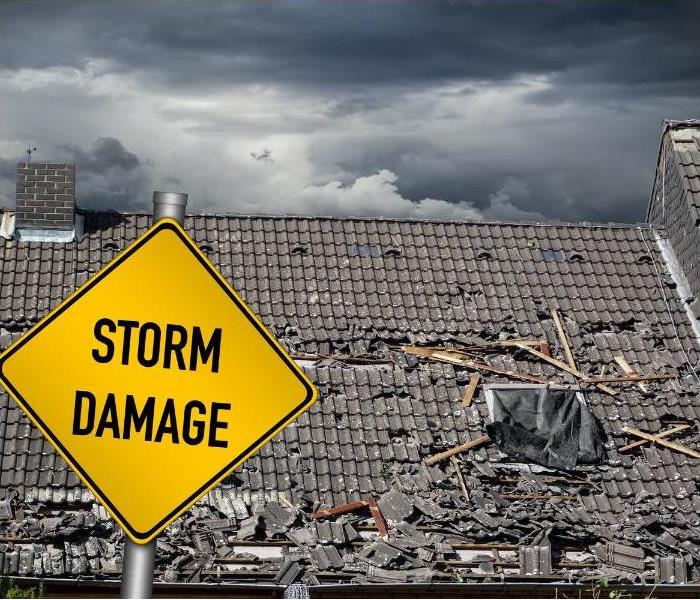 A Comprehensive Guide for West Valley City, UT
A Comprehensive Guide for West Valley City, UT
When a storm hits West Valley City, UT, the damage can be overwhelming. From torrential rains and flooding to powerful winds and hail, the aftermath can leave homes and businesses in disarray. Fortunately, SERVPRO® offers expert storm damage remediation services to help the community recover swiftly and efficiently. Here’s a detailed look at the steps SERVPRO takes to restore properties to their pre-storm condition.
Initial Contact and Assessment
The first step in SERVPRO's storm damage remediation process begins with the initial contact. When a call is received, SERVPRO’s emergency response team is mobilized to respond quickly, understanding that time is of the essence in minimizing further damage.
Upon arrival, the team conducts a thorough assessment of the property. This involves:
Identifying Safety Hazards: Ensuring the site is safe for entry, checking for electrical hazards, structural damage, and potential contaminants.
Damage Documentation: Taking detailed notes and photographs of the affected areas for insurance purposes.
Creating a Restoration Plan: Developing a customized plan of action based on the extent of the damage and the specific needs of the property.
Water Removal and Drying
Storms often bring significant water damage, whether from flooding, rain, or burst pipes. The next critical step is water removal and drying:
Water Extraction: Using industrial-grade pumps and vacuums to remove standing water as quickly as possible.
Drying and Dehumidification: Deploying high-speed air movers and dehumidifiers to thoroughly dry out the affected areas, including walls, floors, and furnishings. This step is crucial to prevent mold growth and further structural damage.
Moisture Monitoring: Continuously monitoring moisture levels using specialized equipment to ensure that all areas are completely dry.
Mold Remediation
In a storm-damaged property, mold can start growing within 24 to 48 hours if moisture isn’t adequately addressed. SERVPRO’s mold remediation process includes:
Containment: Setting up physical barriers and negative air pressure chambers to prevent the spread of mold spores.
Air Filtration: Using HEPA filters and air scrubbers to capture airborne mold spores and improve air quality.
Removing Mold-Infested Materials: Carefully removing and disposing of materials that cannot be salvaged, such as drywall, insulation, and carpeting.
Cleaning and Sanitizing: Cleaning all surfaces and belongings with antimicrobial treatments to eliminate mold and prevent future growth.
Structural Repairs
Once the property is dry and free of mold, SERVPRO begins the process of repairing and restoring the structural integrity of the building:
Board-Up and Roof Tarping: Providing immediate protection from further damage by boarding up windows and placing tarps on damaged roofs.
General Contracting Services: Offering a wide range of repair services, from minor drywall patches to major reconstruction projects, ensuring the property is restored to its original condition or better.
Final Inspections: Conducting thorough inspections to verify that all repairs meet safety and quality standards.
Content Restoration
Storm damage often affects not just the structure but also the contents of a home or business. SERVPRO’s content restoration services are designed to salvage as much as possible:
Pack-Out and Storage: Carefully packing and moving belongings to a secure facility for cleaning and storage during the restoration process.
Cleaning and Deodorizing: Using specialized cleaning techniques and equipment to restore items such as furniture, electronics, documents, and clothing.
Returning Restored Items: Bringing cleaned and restored items back to the property once repairs are complete.
Final Cleanup and Restoration
The final stage in SERVPRO’s storm damage remediation process is a comprehensive cleanup and restoration of the property:
Deep Cleaning: Conducting a thorough cleaning of the entire property, including carpets, upholstery, walls, and ceilings, to remove any remaining dirt, debris, and odors.
Restoration of Aesthetic Elements: Repainting walls, refinishing floors, and performing other cosmetic repairs to ensure the property looks as good as new.
Final Walkthrough: Conducting a final walkthrough with the property owner to ensure complete satisfaction with the restoration work.
SERVPRO’s Commitment to Excellence
SERVPRO of West Valley City, UT, is committed to providing top-notch storm damage remediation services. Their team of highly trained professionals uses advanced equipment and techniques to handle any level of storm damage, ensuring that properties are restored quickly and efficiently.
Key elements of SERVPRO’s approach include:
24/7 Emergency Response: Being available around the clock to respond to storm damage emergencies, minimizing the time between disaster and recovery.
Certified Technicians: Employing IICRC-certified technicians who are trained in the latest restoration techniques and safety protocols.
Advanced Technology: Utilizing state-of-the-art equipment for water extraction, drying, mold remediation, and structural repairs.
Comprehensive Services: Offering a full range of restoration services, from initial assessment and mitigation to complete reconstruction and final cleanup.
Storms can be devastating, but with SERVPRO of West Valley City, UT, property owners have a reliable partner in the recovery process. Their systematic and thorough approach to storm damage remediation ensures that homes and businesses are restored to their pre-storm condition with minimal disruption. From initial contact to final restoration, SERVPRO is dedicated to making it "Like it never even happened."
For those in West Valley City, UT, who have experienced storm damage, contacting SERVPRO immediately can make all the difference in preserving the integrity of their property and returning to normalcy as quickly as possible.
6 Essential Tips to Mitigate Flooding Risks in West Valley City, UT
5/18/2024 (Permalink)
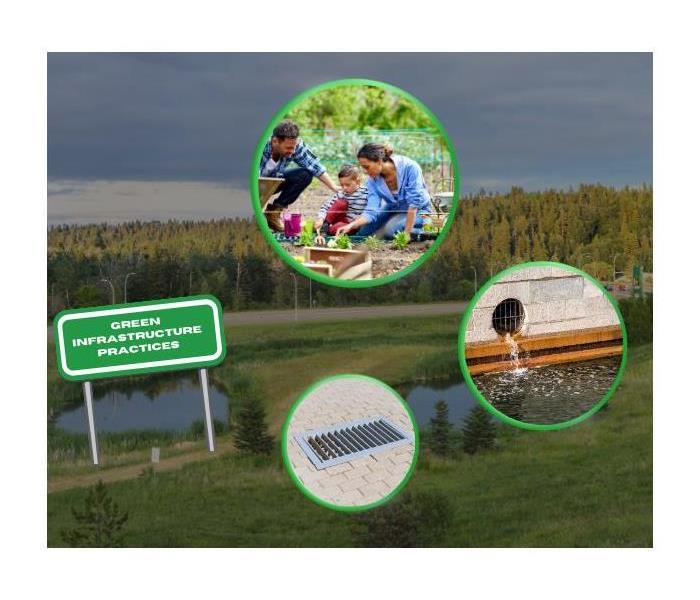 Mitigate Flooding Risks in West Valley City, UT
Mitigate Flooding Risks in West Valley City, UT
West Valley City, nestled in the picturesque Salt Lake Valley, is a vibrant community that faces its share of weather-related challenges, notably flooding. With its unique geographical features and seasonal climate patterns, the city occasionally experiences flooding, posing risks to property, infrastructure, and public safety. However, with proactive measures and community involvement, residents can significantly reduce the impact of flooding events. In this article, we'll explore six essential tips to mitigate flooding risks in West Valley City, UT.
1. Understand the Geography and Drainage Systems:
The first step in mitigating flooding risks is to understand the geography and drainage systems of West Valley City. Being situated in a valley means the city is prone to flooding, especially during heavy rainstorms or snowmelt. Residents should familiarize themselves with the local topography, including low-lying areas and nearby water bodies such as streams, rivers, and retention basins. Additionally, knowledge of the city's drainage infrastructure, including stormwater drains and retention ponds, is crucial. Understanding how water flows through the city helps residents identify potential flood-prone areas and take appropriate precautions.
2. Maintain Clear Drainage Pathways:
One of the most effective ways to prevent flooding is to ensure that drainage pathways remain clear and unobstructed. Residents should regularly inspect and maintain gutters, downspouts, and storm drains on their properties to prevent debris buildup, which can impede water flow during heavy rainfall. Additionally, keeping streets and sidewalks clear of leaves, branches, and other debris helps maintain efficient surface drainage. By taking proactive measures to keep drainage pathways clear, residents can minimize the risk of localized flooding in their neighborhoods.
3. Implement Green Infrastructure Practices:
Green infrastructure refers to nature-based solutions designed to manage stormwater and reduce flooding risks. In West Valley City, residents can implement green infrastructure practices on their properties to help absorb and infiltrate rainwater, reducing the volume of runoff entering the stormwater system. Examples of green infrastructure techniques include installing rain gardens, permeable pavement, and vegetated swales. These features not only enhance the aesthetic appeal of neighborhoods but also provide ecological benefits by promoting biodiversity and improving water quality.
4. Invest in Flood Protection Measures:
For residents living in flood-prone areas or near water bodies, investing in flood protection measures is essential. This may include installing flood barriers, such as sandbags or flood gates, around homes and businesses to prevent water intrusion during flood events. Elevating electrical systems, appliances, and valuables above potential flood levels can also minimize damage. Additionally, retrofitting buildings with waterproofing materials and backflow prevention devices can help mitigate flood risks. By taking proactive steps to protect their properties, residents can minimize the financial and emotional toll of flooding disasters.
5. Participate in Community Flood Preparedness Efforts:
Flooding is a community-wide issue that requires collective action to address effectively. Residents can participate in community flood preparedness efforts by joining neighborhood associations, attending local workshops, and engaging with city officials and emergency management agencies. By staying informed about flood risks and evacuation procedures, residents can better prepare themselves and their families for potential emergencies. Community involvement also fosters resilience and strengthens social cohesion, enabling neighborhoods to effectively respond to and recover from flooding events.
6. Support Sustainable Development Practices:
As West Valley City continues to grow and develop, it's essential to prioritize sustainable land use and development practices that mitigate flooding risks. This includes implementing stormwater management regulations, preserving natural floodplains, and promoting low-impact development techniques. By integrating green infrastructure into new construction projects and retrofitting existing infrastructure to improve resilience, the city can reduce its vulnerability to flooding while enhancing environmental sustainability. Residents can support sustainable development practices by advocating for responsible land use policies and participating in planning processes that prioritize flood resilience.
Flooding poses significant risks to communities, but proactive measures can help mitigate these risks and build resilience. In West Valley City, residents can take several steps to reduce the impact of flooding events, from understanding the local geography and drainage systems to investing in flood protection measures and supporting sustainable development practices. By working together as a community and implementing these essential tips, residents can minimize the threat of flooding and ensure a safer, more resilient future for West Valley City, UT.
Freshen Up Your Home: 10 Tips for Spring Cleaning in West Valley City, UT
4/10/2024 (Permalink)
 Spring cleaning in West Valley City, UT.
Spring cleaning in West Valley City, UT.
Spring is finally here, and with it comes the urge to refresh and renew our living spaces. In West Valley City, Utah, where the winters can be harsh and the springtime is a welcome relief, spring cleaning takes on a special significance. Whether you're a seasoned resident or new to the area, these 10 tips will help you tackle your spring cleaning with ease and efficiency.
1. Create a Plan of Attack:
Before diving into your spring cleaning, take some time to create a plan. Identify which areas of your home need the most attention and prioritize tasks accordingly. Breaking down the cleaning process into manageable chunks will make it feel less overwhelming.
2. Declutter First:
Start your spring cleaning by decluttering your home. Go through each room and identify items that you no longer need or use. Donate or discard these items to free up space and create a more organized environment. Remember the rule of thumb: if you haven't used it in the past year, it's time to let it go.
3. Focus on High-Traffic Areas:
Pay special attention to high-traffic areas of your home, such as the entryway, living room, and kitchen. These areas tend to accumulate the most dirt and clutter, so giving them extra attention during spring cleaning will make a big difference in the overall look and feel of your home.
4. Deep Clean Carpets and Upholstery:
Winter weather can take a toll on carpets and upholstery, leaving them looking dull and dirty. Invest in a good carpet cleaner or hire a professional service to deep clean your carpets and upholstery. Not only will this improve the appearance of your home, but it will also help remove allergens and bacteria, creating a healthier indoor environment.
5. Don't Forget About Windows and Screens:
Spring is the perfect time to give your windows and screens a thorough cleaning. Use a glass cleaner and microfiber cloth to clean windows inside and out, and don't forget to wipe down window sills and tracks. Remove screens and wash them with warm, soapy water before allowing them to air dry completely.
6. Refresh Bedding and Linens:
As the weather warms up, it's time to swap out heavy winter bedding for lighter options. Wash all bedding, including sheets, blankets, and comforters, and consider hanging them outside to air out and freshen up. While you're at it, don't forget to wash curtains and other window treatments as well.
7. Tackle the Kitchen and Bathroom:
The kitchen and bathroom are two areas of the home that often require the most attention during spring cleaning. Clean and disinfect countertops, sinks, and appliances in the kitchen, paying special attention to areas that tend to collect grime, such as behind the stove and refrigerator. In the bathroom, scrub tile grout, clean the toilet, and replace shower curtains or liners if necessary.
8. Organize Closets and Storage Spaces:
Take advantage of spring cleaning as an opportunity to organize closets and storage spaces. Donate clothing and household items that you no longer need, and invest in storage solutions such as bins, baskets, and shelving to help keep your closets tidy and clutter-free.
9. Freshen Up Outdoor Spaces:
Don't forget about your outdoor spaces when spring cleaning. Sweep away debris from patios, decks, and walkways, and clean outdoor furniture and grill surfaces. Consider adding fresh mulch to flower beds and planting new flowers or shrubs to enhance curb appeal.
10. Maintain Your Cleaning Routine:
Once your spring cleaning is complete, make an effort to maintain your newly refreshed home by establishing a regular cleaning routine. Set aside time each week to tackle household chores such as vacuuming, dusting, and mopping, and address any messes or clutter as soon as they arise.
In conclusion, spring cleaning in West Valley City, Utah, is an opportunity to refresh and renew your living space after the long winter months. By following these 10 tips, you can tackle your spring cleaning with ease and efficiency, leaving your home looking and feeling its best for the season ahead.






 24/7 Emergency Service
24/7 Emergency Service









